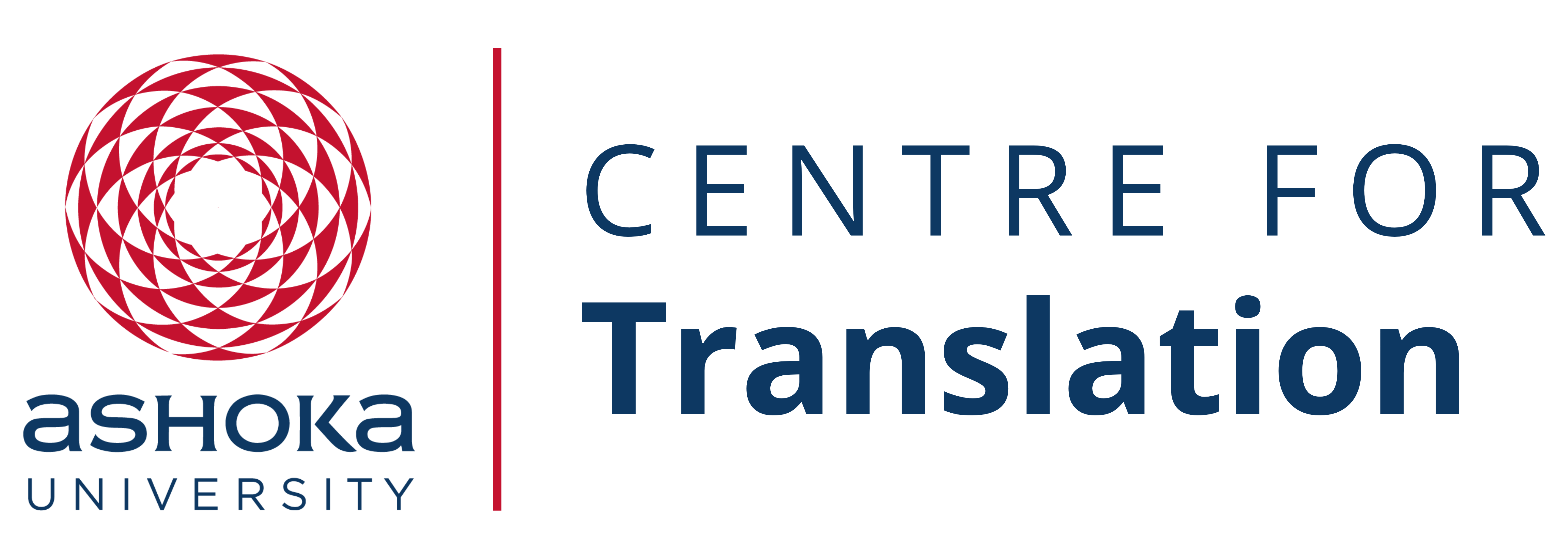An excerpt from More or Less “translation” by Rita Kothari and Krupa Shah, published in A World Atlas of Translation in 2019.
A classic question about India and its over 1000 recorded languages is how did and does India manage communication amidst such linguistic diversity? Surely translation must be the only way. And yet formal associations, training organizations, universities, diplomas, degrees of translation in India are few and far between. With the exception of a handful of individuals associated with foreign embassies and corporate communications, a large number of untrained translators go through ad hoc assignments for very meager pay. While a small number does derive intellectual
joy from it, translation as a practice is mostly perceived as a means towards an end, as a pragmatic job that gets things done. In such an environment, it is natural that theorizations of translation, as we know them, are scarce. If we understand ‘theory’ to be an abstraction of practices, there is very little in Indian scholarship before the nineteenth century that documents practice-leading-to-theory. If theory is understood to be a precursor of practice, almost a textual manual, examples are equally scarce, despite a highly sophisticated tradition of linguistics. On occasions of foreignness or awe towards either the source or target language may find its place in what would be considered as ‘theory,’ – should such a binary exist or even matter! We suspect that a cognitive awareness of substantial linguistic difference and perhaps, a well-defined hierarchy would be important conditions for the act of translation to be noticed or considered extra-ordinary enough to be worthy of comment. Thus when translation occurs between what are called regional languages or bhashas, the absence of theoretical and pedagogical material is striking. This, we believe, is one of the core understandings that translation scholars, lamenting the lack of theory, do not sufficiently account for. We hope that the unfolding below will make this point clear. In the discussion that follows, we lay the field that demonstrates in broad brush strokes the multiple contexts of translation in India.
Main Challenging Issues
This report aims to theorize the present moment of translation in India without losing sight of its historical and contemporary understandings. It traces in the pre-modern moment, a range of linguistic negotiations that destabilize a theory of an absence of translation and dwells on the various manifestations and perceptions of linguistic difference that are critical for an understanding of what translation meant in pre-modern India. In the era of colonization, new ideas and definitions of language and translation testify to the argument made by Sakai that translation is “an act with which to produce difference, inscribe borders and thereby identify the unity of a language”. We demonstrate subsequently how colonial technologies produce the institution of language through translation, and also how translation rests upon the institutions of languages. We argue that ‘translation’ as a term and as a concept of text-to-text transference of meaning carried out with accountability to the written word is a nineteenth-century phenomenon dating back to the colonial period. Furthermore, in the postcolonial moment that saw the use of translation in the service of regional identities and the project of federal nationalism, we also examine the complex relationship between English and the ‘modern Indian languages’ that has given rise to new creolized idioms that come with specific and situated qualifiers of age, location, and class.
Indeed, linguistic and non-linguistic or textual and non-textual exchanges of the kind that characterize not just India, but South Asia as a whole, may not go by the name of translation. It is possible to say that South Asia as a whole is a region constituted through translation. The articulation of Buddhism’s dissent against hegemonic Hinduism, its employment of a language other than Sanskrit; the movements of devotion and mysticism through Bhakti and Sufi saints across different parts of the Indian subcontinent and messages constituted through diverse tongues and even the adaptation of Islam and Christianity – all of these show translation as a constitutive and shaping force in South Asia. In fact, it is possible to look back even at the (civilizational and also post-nation) idea of India through the prism of translation and observe the regenerative force it has been. How did India become an assemblage of texts in the nineteenth century, a code that could be cracked by colonial masters only through translation? How did India in the turbulent years of the twentieth century navigate socialism and Gandhian ideology? What role did translation play in the Dalit awakening beyond the limits of Maharashtra? How does the regional become pan-Indian, or the other way round? These questions are of immense import not only in examining the socio-historical role of translation but also in tracing its trajectory to the present.
To read more, download the complete version of the article here.
